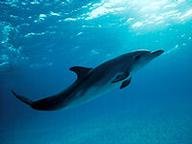Quiz Answer Key and Fun Facts
1. The Maui's dolphin is endemic to only one country, where it is the country's only endemic cetacean. Which country is this?
2. The Maui's dolphin is a subspecies of another type of dolphin. Which one?
3. The Maui's dolphin is the smallest type of dolphin in the world.
4. The Maui's dolphin has a very distinctive feature physically which can easily help them be identified and is unique to them and their parent species. What is it?
5. The Maui's dolphin has one calf per birth. About how often do they give birth?
6. The word "Maui" in "Maui's dolphin" comes from what?
7. The cries of the Maui's dolphin can very easily damage human ears.
8. The Maui's dolphin sure likes to eat a lot! Which of these would they be unlikely to snack on?
9. The Maui's dolphin is the world's rarest dolphin.
10. What is the BIGGEST threat to the Maui's dolphin's existence?
Source: Author
Daaanieeel
This quiz was reviewed by FunTrivia editor
guitargoddess before going online.
Any errors found in FunTrivia content are routinely corrected through our feedback system.

